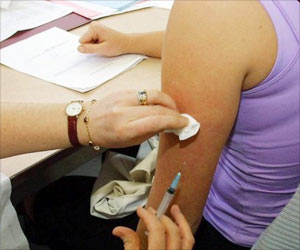
Nilam Patel, Additional Director of the Gujarat Health Department, reported that by July 24, 23 confirmed cases of Chandipura virus (1✔ ✔Trusted Source
Chandipura vesiculovirus
) had been detected across the state, resulting in 10 confirmed deaths. Patel mentioned that a total of 121 symptomatic cases had been reported, with 6 cases originating from outside Gujarat—3 from Rajasthan, 2 from Madhya Pradesh, and 1 from Maharashtra.
Due to preparedness measures, including the mobilization of doctors and field staff, surveillance efforts are effective. Overall, there have been 40 deaths, with 10 confirmed as Chandipura cases. Patel emphasized that patients are being hospitalized for early diagnosis to reduce the mortality rate.
Chandipura Virus: New Insights
Chandipura Virus (CHPV) is a member of the Rhabdoviridae family, responsible for causing sporadic cases and outbreaks predominantly in the western, central, and southern regions of India, especially during the monsoon season. It is primarily transmitted through vectors like sand flies and ticks.
The virus predominantly affects children under 15 years of age, presenting as a febrile illness that can escalate to severe neurological symptoms and, in some cases, result in death. Currently, there is no specific treatment for CHPV; management is symptomatic, focusing on early diagnosis and supportive care. Preventive measures such as vector control, hygiene, and public awareness are crucial to combat the spread of the virus.
In response to the outbreak, Chief Minister held a meeting and decided to implement vector control measures. Malathion powder dusting has been conducted in mud houses across over 4,300 villages, and intra-residual spraying has been carried out in more than 1,000 villages. Additionally, 2 lakh houses have been sprayed with Malathion powder to combat sandflies. Surveillance efforts have been intensified.
Gujarat has also established a Biotechnology Research Centre equipped with testing facilities. Patel confirmed that 41 patients are currently hospitalized, with 23 confirmed Chandipura cases.
The Chandipura Virus (CHPV), a member of the Rhabdoviridae family, causes sporadic cases and outbreaks in western, central, and southern India, particularly during the monsoon season. It is transmitted by vectors like sand flies and ticks.
Advertisement
The disease mainly affects children under 15 years of age and can present with febrile illness, sometimes leading to death. While there is no specific treatment for CHPV, symptomatic management and timely referral of suspected Acute Encephalitis Syndrome (AES) cases to designated facilities can improve outcomes.
Since early June 2024, Gujarat has reported 78 cases of AES in children under 15, with 75 from 21 districts/corporations in Gujarat, 2 from Rajasthan, and 1 from Madhya Pradesh. Of these, 28 cases have resulted in death. Among the 76 samples tested at NIV Pune, 9 have been confirmed as positive for CHPV, all from Gujarat, along with 5 associated deaths.
Advertisement
Reference:
- Chandipura vesiculovirus – (https://en.wikipedia.org/wiki/Chandipura_vesiculovirus)
Source-Medindia



